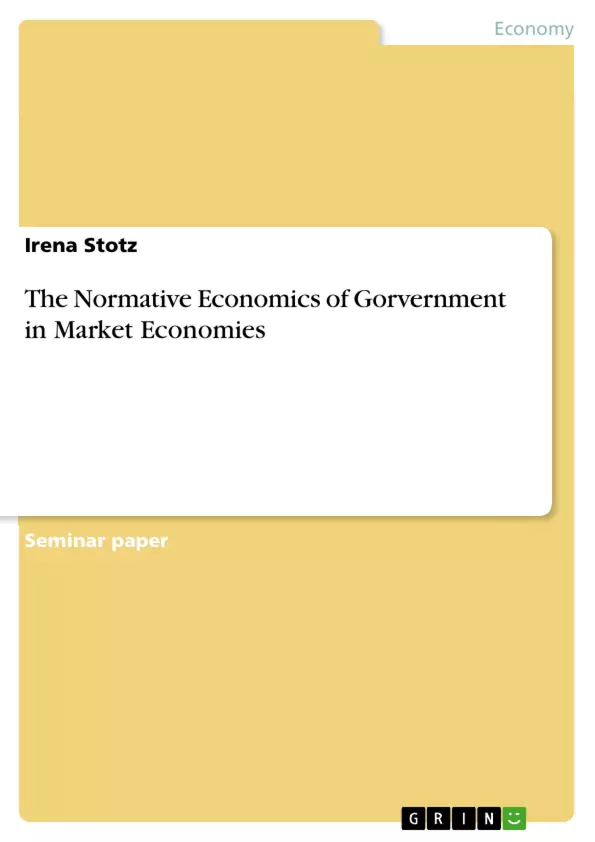This assignment discusses the normative governmental intervention in the market. The aim is to decide if the government should intervene or not. Before deciding to intervene, two different economic views will be introducing shortly, the invisible hand by Adam Smith and the Keynesian approach, which will be follow up in this assignment.
The first step is to describe the market with its impacts, demand and supply and how these two impacts arise. After this the market efficiency and market failure will be elucidate by negative and positive externalities. Other influence like public goods or common resources will not be describe, because this would blow the frame of this assignment.
After define the principles, the government intervention will be discuss. There are different ways, which will be demonstrated. These are command-and-control policies like regulation, market-based policies like corrective tax and subsidies and tradable pollution permits.
These opportunities will be accompanied by examples to clarify them show their pros and cons.
At least the conclusion with the résumé of the assignment follows with an integrated ITM-checklist.
Table of Contents
- 1 Introduction
- 2 Market
- 2.1 Demand and Supply
- 2.2 Market Efficiency and Market Failure
- 3 Governments Intervention
- 3.1 Regulation
- 3.2 Corrective Taxes and Subsidies
- 3.3 Tradable Pollution Permits
- 4 Conclusion
Objectives and Key Themes
This assignment examines the normative approach to government intervention in market economies. It aims to determine whether government intervention is justified and explores the economic perspectives of Adam Smith's "invisible hand" and the Keynesian approach. The main themes are:- Market Dynamics: Supply and demand, market efficiency, and market failure.
- Government Intervention: Exploring various approaches and their effectiveness.
- Externalities: Analyzing the impact of negative and positive externalities on market efficiency.
- Command-and-Control Policies: Examining regulations as a form of government intervention.
- Market-Based Policies: Evaluating corrective taxes, subsidies, and tradable pollution permits as alternative interventions.
Chapter Summaries
The assignment begins by introducing the concept of government intervention in market economies and outlining the objectives of the study. It then delves into a discussion of the market, exploring concepts of demand and supply, market efficiency, and market failure. The analysis considers negative and positive externalities and their impact on market equilibrium. Chapter 3 focuses on different approaches to government intervention, including command-and-control policies like regulation, as well as market-based policies such as corrective taxes and subsidies, and tradable pollution permits. The chapter examines the advantages and disadvantages of each approach, providing examples to illustrate their practical applications.Keywords
The main keywords and concepts of the assignment include government intervention, market efficiency, market failure, externalities, regulation, corrective taxes, subsidies, tradable pollution permits, Adam Smith's invisible hand, and Keynesian economics. The assignment focuses on analyzing the economic rationale and effectiveness of different government intervention strategies in market economies.- Quote paper
- Irena Stotz (Author), 2012, The Normative Economics of Gorvernment in Market Economies, Munich, GRIN Verlag, https://www.grin.com/document/266386



